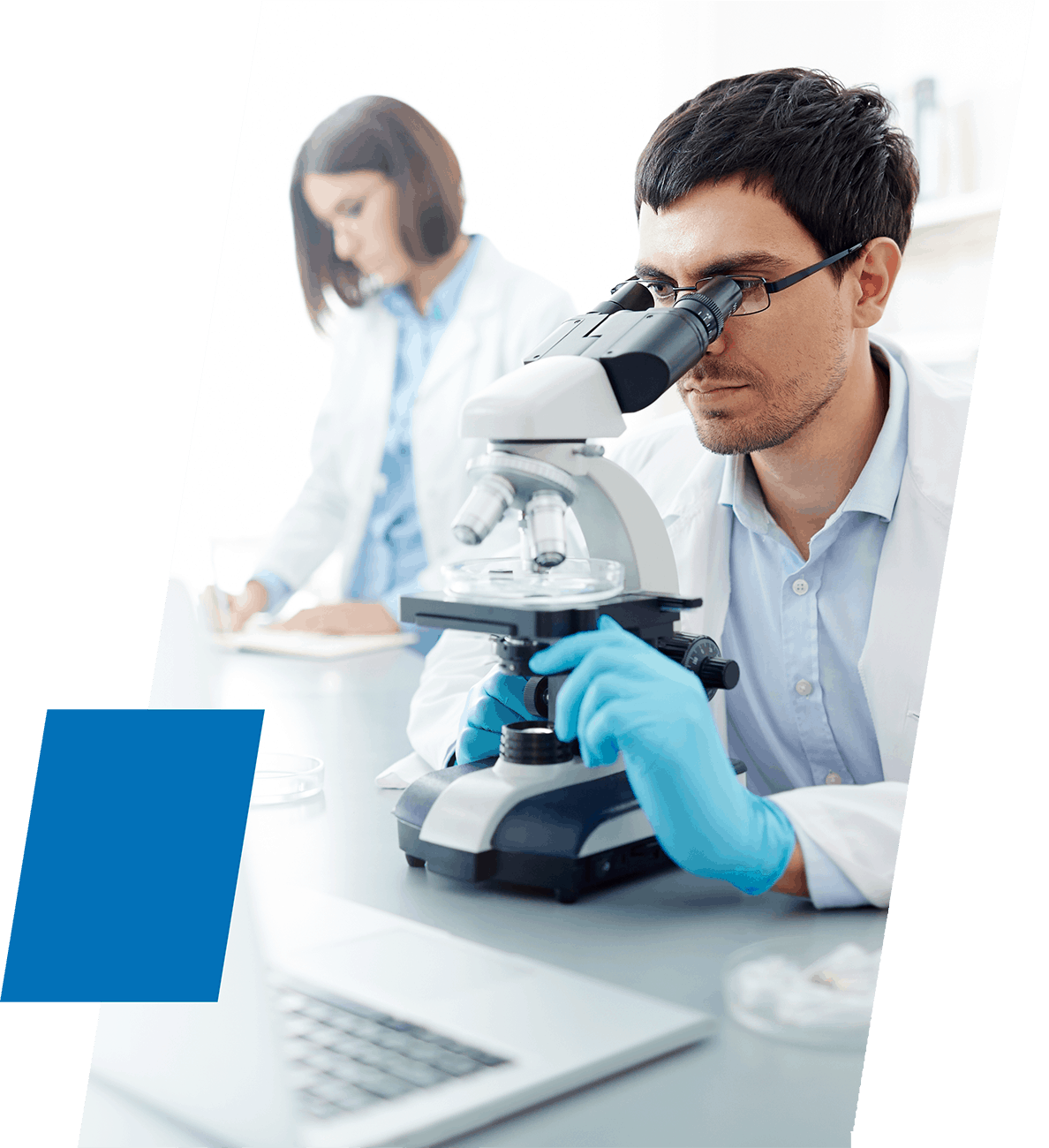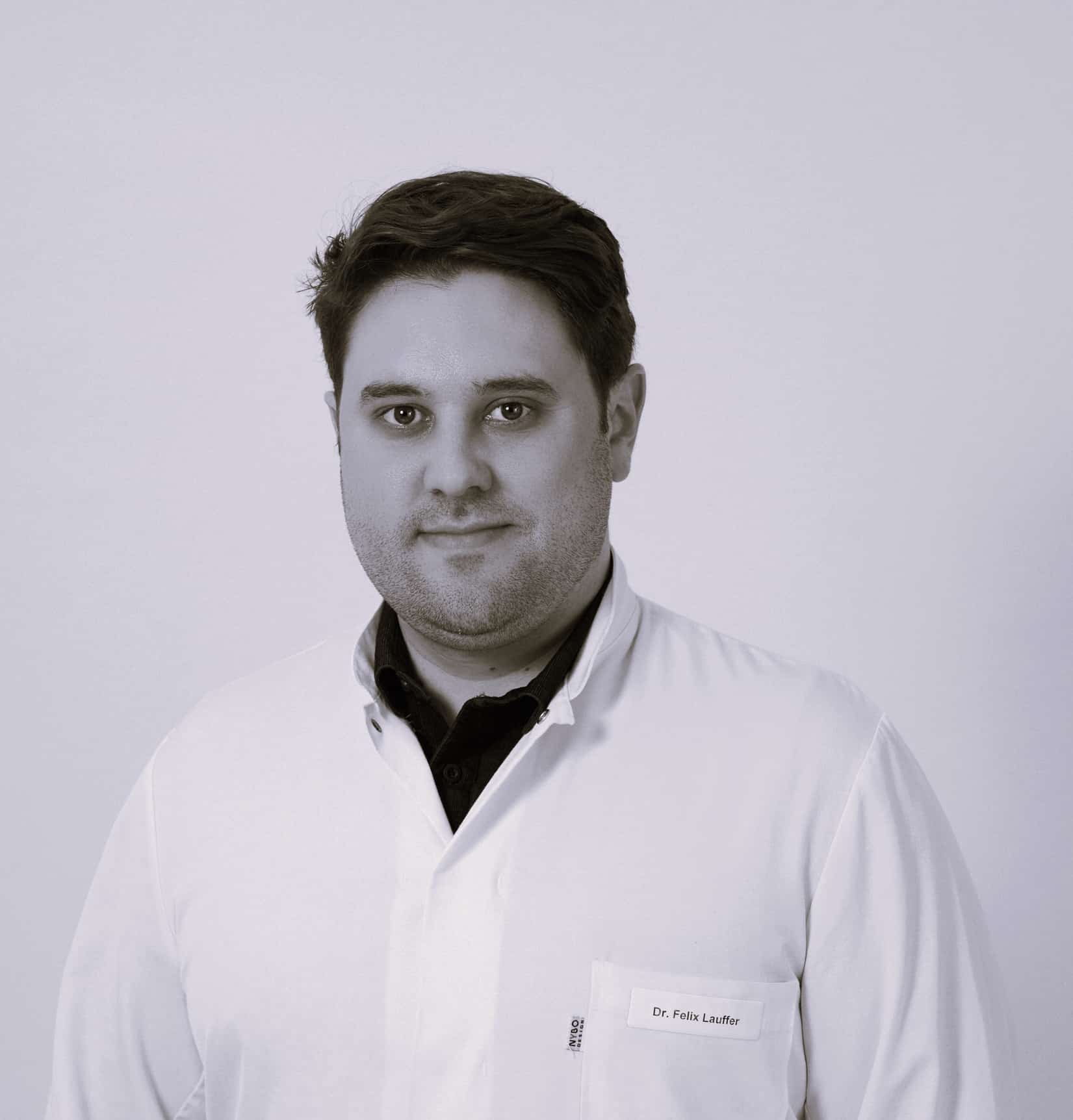
RTG2668 Research
Why is our research important?
Up to 40% of the population in developed countries suffer from allergic diseases and approximately 5-8% from autoimmune diseases with still increasing prevalence. Therefore, a better mechanistic understanding of disease pathogenesis is urgently required for the development of appropriate diagnostics and for novel treatment strategies. Therefore the RTG2668 three main foci are:
Identification – the identification of IMS in different disease phases
Understanding – a more precise stratification of inflammatory subtypes
Evaluation – The evaluation of scientific data

RTG2668 research aims
The main four scientific objectives of this RTG are:
Our Projects
To achieve our scientific aims, 12 proposals were included in the RTG26668 with six in allergy/allergic inflammation (Part A; A1-A6), and six in autoimmune diseases (Part B; B1-B6). All projects are set up as tandem projects with one life science graduate and one medical student or clinician scientist, working on two scientifically independent projects within one tandem approach. The tandem approach of researchers with life science and medical study background will allow in depth cooperation and exchange between the trainees and, at the same time, lead to independent accomplishments and publications.
Projects on Allergy – Part A
A1: Tissue-resident T cells: reducing microbial diversity – initiating AD?
AD ranges among the most common inflammatory disease in the Western world but it is yet unknown which factors drive the initiation of eczematous lesions. The research project draws on the established human disease model of AD, the atopy patch test (APT) in which early stages of AD initiation can be investigated even when signs of inflammation are not visible, yet. The project will prospectively investigate the changes of the local skin microbiome in the development of AD and simultaneously the influence of these changes on skin resident Trm cells with the help of human skin swaps, razor scrapings and biopsies. The project will investigate Trm cytokine profiles and surface molecules by flow cytometry and relevant human skin microbial species will be determined by 16S rRNA sequencing. The temporal dynamics and specificity of interactions in the activation of Trm cells will be investigated by cross culture of early lesional immune cells with late lesional bacteria lysates and vice versa. Finally, the influence of routine treatments such as antiseptic UV-light, calcineurin inhibitors and systemic cyclosporine on the hereby identified targets will be studied to open new therapeutic options for AD.
A2: Unravelling cellular networks of type 2 immune responses in atopic dermatitis
Atopic dermatitis (AD) is a frequent inflammatory skin disease and type 2 immune responses are crucially involved in AD pathogenesis, in development of AD comorbidities, in the severe itch in AD, and in driving co-existing allergies. Despite recent insights highlighting the role of skin barrier disruption and cutaneous microbial dysbiosis, the exact interplay of immune cells initiating type 2 immunity in AD development ist still unclear. New targeted therapies for AD (e.g. therapeutic antibodies blocking interleukin (IL-)4 and/or IL-13) may also allow early interventions but a better understanding of the cascade of immune events leading to IL-4 and IL-13 induction is needed. Investigations in human AD and in appropriate pre-clinical models will decipher the cellular network of immune cells underlying type 2 inflammation. In mice, where the IL-4 and/or IL-13 promoters are fluorescently tagged, cells that turn on production of IL-4 and/or IL-13 will be monitored. Localization, time points and cellular composition of IL-4 and/or IL-13 producing cells will be assessed. Established protocols of titrated skin barrier disruption and/or forced cutaneous dysbiosis for the initiation of AD along with AD models will be investigated using these mice. The aim is to decipher specific or redundant roles of IL-4+ and IL-13+ cells for induction of type 2 immunity and for AD also using the respective knock-out mice. Findings will be validated a) in humans with AD including in those from our clinical trial unit with novel therapies, b) in samples from induced barrier disruption, and c) in AD-specific skin tests.
A3: Exploring cutaneous immune shifts induced by Th2-directed therapies compared to Janus Kinase inhibition in patients with AD.
AD is a complex and heterogeneous disease leading to cutaneous and systemic inflammation. While there is an overall consensus that Th2 immunity plays a major role in diseases pathogenesis, about 30% of patients treated with targeted therapies against Th2 key pathways do not achieve sufficient improvement of skin symptoms. This clinical observation implicates that there are different, so far unidentified disease endotypes. Therefore, this research project aims to identify cutaneous immune switches mediated by recently approved systemic therapies for AD with different modes of action (MOA). Patients treated with systemic therapies in the outpatient clinic of the department of Dermatology and Allergology will be included in the study. We will perform in depth clinical and immunological phenotyping including full-body, three-dimensional photography, measurements of skin functions, such as transepidermal water loss, collect skin microbiome samples, blood for flow cytometry analysis and skin biopsies for single cell RNA-seq. Correlating clinical outcomes with single cell RNA-seq data as well as microbiome composition will allow to create a network of genes and microbes correlated to full or partial disease regression or treatment failures. Newly identified hub genes will further be investigated by stimulating primary keratinocytes and three-dimensional skin equivalents with disease specific T cell supernatant, collected from re-stimulated lesional T Cells after CRISPR/Cas induced knock out. This translational approach will allow further mechanistic insight into AD pathogenesis and a better understanding of features predicting optimal therapeutic responses.
A4: Mast cell intrinsic and extrinsic signals in the context of allergic inflammation.
We aim to define a core IgE:FcεRI-dependent gene expression module from combined in vitro and ex vivo experiments. Insights will be derived of established CRISPR/Cas9 mediated inducible loss of function approaches in peritoneal mast cells. These experiments will yield a global view on mast cell-derived mediators that could elicit long-lasting effects on immune responses. Targeted and genome-wide CRISPR screens were designed to obtain a systems biological overview over processes critically influencing the surface presence of the IgE:FcεRI complex and downstream consequences, which constitute critical allergic switches. Mass spectrometry-based proteomics will yield a comprehensive overview on mast cell secretomes, how mast cells reconstitute their granule components and how allergic signals (IgE, IL-4) influence this process. Our preliminary results show that mast cell degranulation profoundly affects macrophage differentiation and polarization via multiple mechanisms. Our studies will also set the stage to establish the intracellular localization of newly identified mediators within mast cells and within the mast cell granule network as well as their biological actions upon release from the cells. These insights will have great impact on understanding mast cell biology and the role mast cells play in allergy and homeostasis.
A5: Molecular switches driving Th17 cells into IL-17+Treg cells as mediators of immune tolerance to allergens
The switch between Th17 and Tregs is also the switch between health and disease and therefore a very major topic not only in allergy and autoimmune disease. More recently we also observe that Tregs and Tr17 cells occur on site of local inflammation in the airway lumen and therefore intend to analyze the function of the cells in fascinating organoid cultures. These models are suitable to explore the function of novel genes that are coming from our single cells sequencing studies (hot and unknown), but they also represent novel targets for diagnosis and treatment of diseases. Technologies are: Cell culture, organoid cultures, quantitative PCR, single cell seq, DNA array technology (mRNA, miRNA, methlome), high dimensional flow cytometry, western blot, targeted metabolomics, mesoscale protein analysis, Luminex, fluorescent immunohistology, life cell imaging, optional also murine disease models including sophisticated tracer systems). For both tandem team member this project provides an institute and supervision 100% dedicated for research.
A6: Maternal cytokines as early molecular switches in infection-driven immune programming of offspring.
Helminth parasites not only exert strong immunomodulatory effects on infected hosts, but also influence the allergic predisposition of offspring born to infected mothers. We hypothesized that transmaternal exposure to schistosomiasis drives in utero effects that enhance tolerogenic immune processes in later life. Recently, we have shown that maternal schistosomiasis induces steady-state changes in CD4+ T cell polarization and B cell priming, alongside an altered dendritic cell phenotype sustained into adulthood, providing evidence for complex priming effects imparted by infection via feto-maternal crosstalk. Our continuing work focuses on exploring i) the mechanism of reduced allergic predisposition of these offspring ii) the gestational environment created by chronic helminth infection, particularly at the feto-maternal interface (i.e. in the placenta), and iii) the key gestational factors, such as cytokines, acting as molecular switches for differentially programming the fetal immune system. Furthermore, we will explore the role of trained immunity as a possible driving mechanism for these modifications. To answer these questions, we will build upon our established experimental mouse models evaluating altered inflammatory responses in transmaternally-exposed murine offspring. We assess the immunophenotype, epigenetic and metabolic alterations of key immune compartments that predispose the enhanced resolution of inflammation. Our main methods include amongst others adoptive transfer experiments in allergy models and in vitro co-culture systems. In parallel, using cytokine receptor knock-out or reporter mice we will identify the cellular sources of cytokines produced under chronic helminth infection at the feto-maternal interface, alongside with a developmental assessment of when previously identified immune modifications occur in offspring.
Projects on Autoimmunity – Part B
B1: Study CD8+ T cell responses in type 1 diabetes
Incidence of type 1 diabetes (T1D) is increasing and infections as well as CD8+ T cells have been identified as potential drivers. However, it is not well understood how ‘healthy’ infection-induced CD8+ T cells that provide protective immunity towards the relevant pathogen differ from ‘pathogenic’ CD8+ T cell responses that mediate T1D. With novel technologies, it is now possible to precisely characterize polyclonal T cell receptor (TCR) repertoires and associated T cell functionality. We will use novel tools, such as single cell mRNA sequencing, Crispr/Cas9-guided orthotopic TCR replacement and TCR avidity measurement by reversible MHC multimer staining (the latter two originally developed in our research groups) to characterize TCR repertoires, T cell maintenance and differentiation in well-established preclinical mouse models of T1D. Our working hypothesis is that ‘healthy’, infection-induced and ‘pathogenic’ T1D-mediating TCR repertoires significantly differ, even when they are directed against exactly the same epitope. In addition, we will investigate the relevance of T effector (Teff) and T memory (Tm) cells for induction and maintenance of T1D and will probe the clonal composition of autoimmune T cell responses over time. Here our working hypothesis is that cooperation of Teff and Tm cells is essential for induction and maintenance of T1D and that distinct T cell clones dominate the induction vs. maintenance phase of T1D. We will in the long-run compare findings from preclinical models with data directly derived from T1D patients.
B2: Viral mimicry-inducing autoimmunity.
A plethora of autoimmune phenomena are associated with chronic hepatitis C virus (HCV) infection. HCV infection e.g. causes type II/III mixed cryoglobulinemia (MC), which is characterized by immune complexes containing rheumatoid factor (RF), IgG, and HCV RNA. However, the distinct triggers and cellular networks involved in the activation of RF-synthesizing B cells and inducing autoimmunity are poorly understood. We found a germ-line integrated silent human endogenous retroviral (HERV) element, HERV-K, to be reactivated in HCV-infected patient blood samples Interestingly, the gag protein of HERV-K has amino acid sequence similarities with IgG1-Fc that is targeted by the rheumatoid factor. Scientific question: We reason that reactivation of HERV-K by HCV infection triggers RF-synthesis and in consequence immune complex formation. Thus, we ask whether RF-synthesis by B cells in response to viral mimicry constitutes the Immune Master Switch for autoimmunity in hepatitis C.
B3: The contribution of autoreactive T cells to psoriasis chronification.
Psoriasis is a chronic inflammatory skin disease with a prevalence of 2% in the Western population. It is characterized by an exaggerated type 17 immune response that in turn induces disease hallmarks such as a thickened epidermal layer and infiltration of neutrophils. Until now, it is not well understood if specific antigens are early events or epiphenomena in the pathogenesis of psoriasis – or whether psoriasis is actually autoimmune or auto-inflammatory. In the last decades, auto-antigens derived from human skin have been described, amongst them keratin 17, LL37, ADAMTSL5, Desmoglein3 and PsoP27. However, insights into the causal function of these auto-antigens during psoriasis development and their pathophysiological importance for chronification are mostly missing and an approach delivering a comprehensive overview on auto-antigenic events has not been performed so far. We hypothesize, that immune responses against auto-antigens are common in psoriasis and auto-reactive T cells are causative for the chronic course of inflammation in the skin of patients. Using the HLA ligandome technology and mass spectrometry we identified putative candidates in lesional biopsies of psoriatic skin. Pre-liminary in vitro experiments on the immunogenic role of the peptides confirmed our hypothesis. To deliver a comprehensive understanding of auto-reactive events in the pathogenesis of psoriasis, ambitious techniques of cellular and molecular biology such as in vitro proliferation assays and FACS analysis using human material will be applied. Moreover, advanced murine in vivo experiments will be performed, thereby getting the unique chance to address the functional role of putative psoriasis auto-antigens in vivo.
B4: Role of CBM complexes in keratinocytes in inflammatory skin disease.
There is a long-lasting debate on how autoimmune diseases transform into chronic disease commencing with auto-reactivity, early inflammation as transmitter with ongoing disease as end stage. Is it alterations within tissues, the immune system or both? An important susceptibility locus for human psoriasis contains the gene for CARD14. CARD14 encodes for an inflammatory adapter molecule, which can link external signals in keratinocytes to the activation of BCL10-MALT1 complex and gain-of-mutations in CARD14 can be found in some 24 patients with psoriasis but not in others. To better understand the role of keratinocyte intrinsic BCL10-MALT1 for the human autoimmune disease psoriasis, the respective keratinocytespecific knockouts will be investigated. A broad screening of putative keratinocyte activators and the production of central inflammatory cytokines and chemokines will be used to determine the role of BCL10, MALT1 and MALT1 paracaspase. For the downstream consequences of BCL10-MALT1 activation typical MALT1 substrates will be analyzed as well as the transcriptome of activated keratinocytes. Importantly, linking these analyses to psoriasis, keratinocytes will be activated with IL-17, IL-1β or TNF. Given that BCL10-MALT1 complexes may be activated in humans also in the absence of a CARD14 mutation by still unknown external signals, analyses from defined human samples will be performed to determine such a role. Next to primary human psoriasis samples this includes analyses of small molecule MALT1 paracaspase inhibitors that will be evaluated for their interventional potential in human keratinocytes undergoing activation of the BCL10-MALT1 complex.
B5: Modulation of tissue-resident Foxp3+ Treg cells in the central nervous system.
Regulatory T (Treg) cells are indispensable for the maintenance of immune tolerance, and deficiency of Treg cells results in multiorgan autoimmunity. However, in recent years, it is increasingly becoming clear that Treg cells are very heterogeneous in terms of specificity and functional phenotype. Treg cells have distinct features according to the tissue and anatomical niche they reside in. In particular, tissue resident Treg cells contribute to the homeostasis and structural integrity of various organs, including the central nervous system (CNS). In previous work, we found that Treg cells that persist in the CNS after an inflammatory episode almost uniformely express the transcription factor Blimp1 (encoded by Prdm1). In preliminary data, we have generated extensive RNAseq, single cell RNAseq and ATACseq data of CNS Treg cells, and identified a variety of Blimp1 target genes to be regulated in CNS Treg cells. We have also set up a system to specifically manipulate Treg cells in vivo in the CNS by CRISPR/Cas9 gene editing. In this project, we will validate distinct Blimp1 target genes in Treg cells in the CNS by loss-of-function approaches in vivo. We will read out immunologic functions of Treg cells but also non-canoncial functions of Treg cells in terms of maintenance of homeostatic functions of CNS-intrinsic cells like astrocytes and lining cells of the cerebrospinal fluid spaces in order to better understand the biology of post-inflammatory CNS tissue.
B6: Metabolic T cell activation in tissue damage – linking metabolic liver disease and skin autoimmunity.
NAFLD and NASH develop in the context of the metabolic syndrome also frequently observed in patients with psoriasis. Recent insights especially by the group of P. Knolle have elucidated much deeper understanding of the cascade of events and immune cells involved in NAFLD and NASH pathogenesis. It became evident that metabolic signals as well as tissue-specific triggers such as short chain fatty acids and extracellular ATP are involved in orchestrating CXCR6+ CD8 T cells to destroy and harm hepatocytes utilizing a newly described pathway of “auto-aggression”. These insights ask for further exploration to identify specific factors 26 governing this process and will allow to explore the skin as the `other organ´ next to the liver harboring CXCR6+ CD8 T cells in psoriasis. Combining their well-established models and methods for NAFLD and NASH with preclinical models of psoriasis provided by groups of this consortium (A2 (Biedermann), B3 (Eyerich/Garzorz-Stark), B4 (Ruland)) such as the imiquimod-induced or antigen-specific skin inflammation will allow to extend the molecular understanding of T cell aggression from NAFLD and NASH also to skin autoimmunity/auto aggression as well as a causal connection of these diseases through common immune pathological mechanisms. These analyses will also allow to dissect general from tissuespecific mechanisms and those that are driven by the metabolic dysfunction versus those attributable solely to immune activation or both.

















